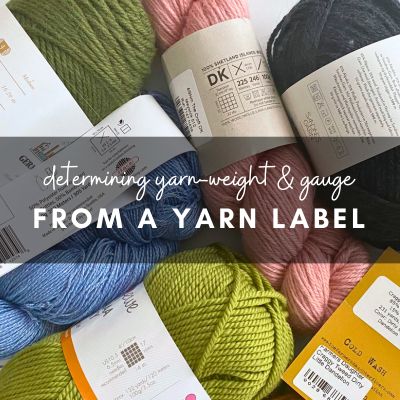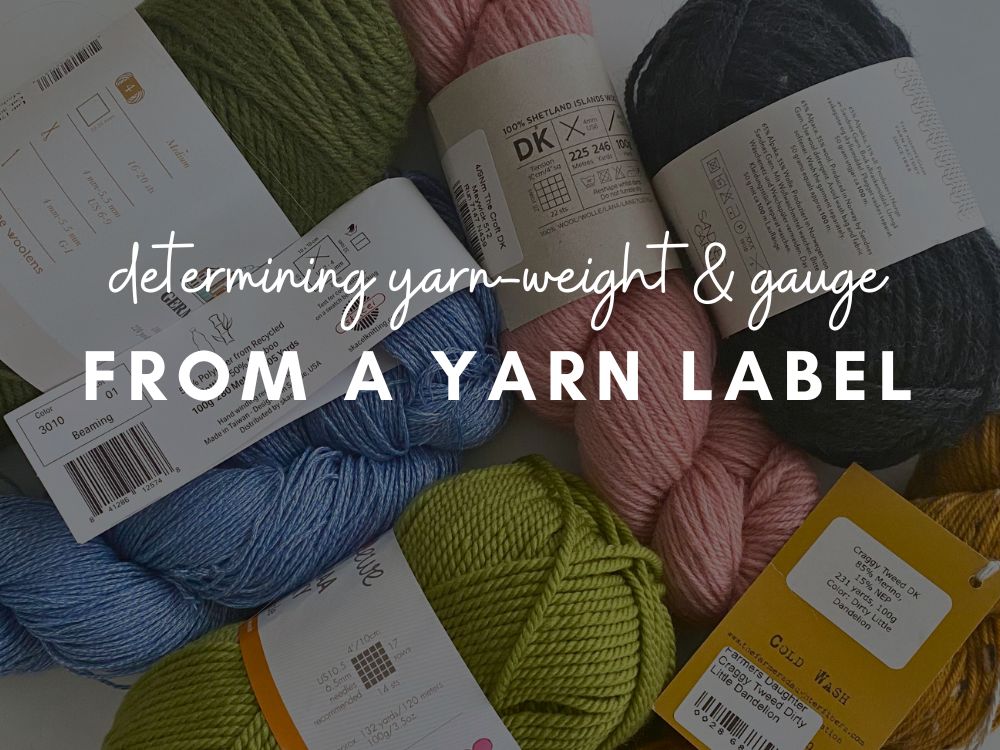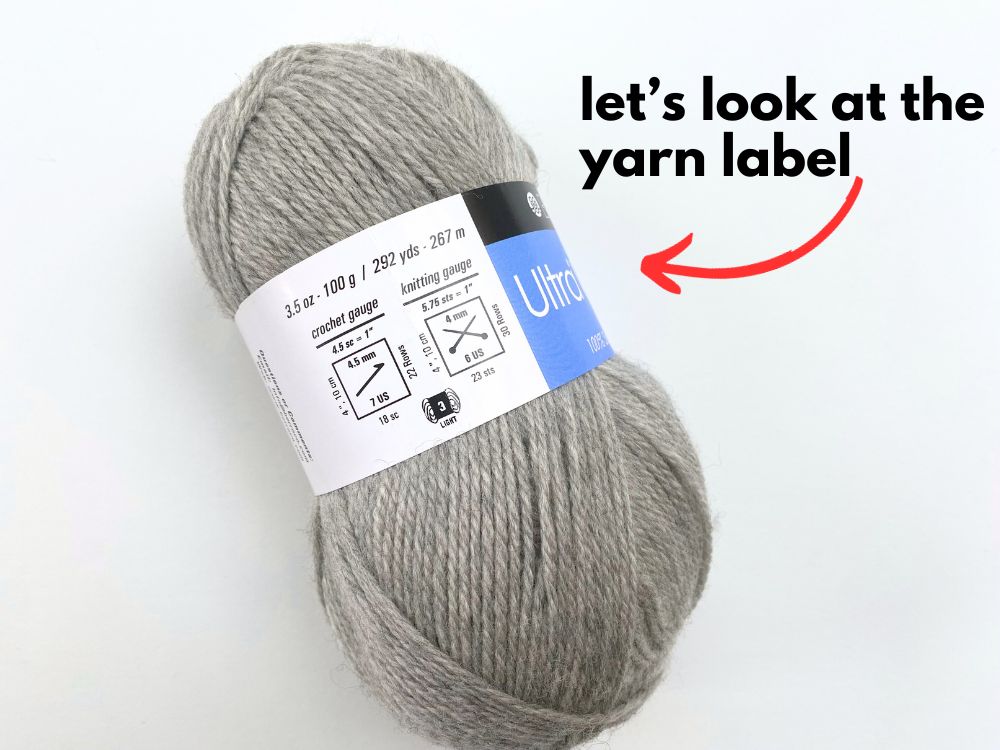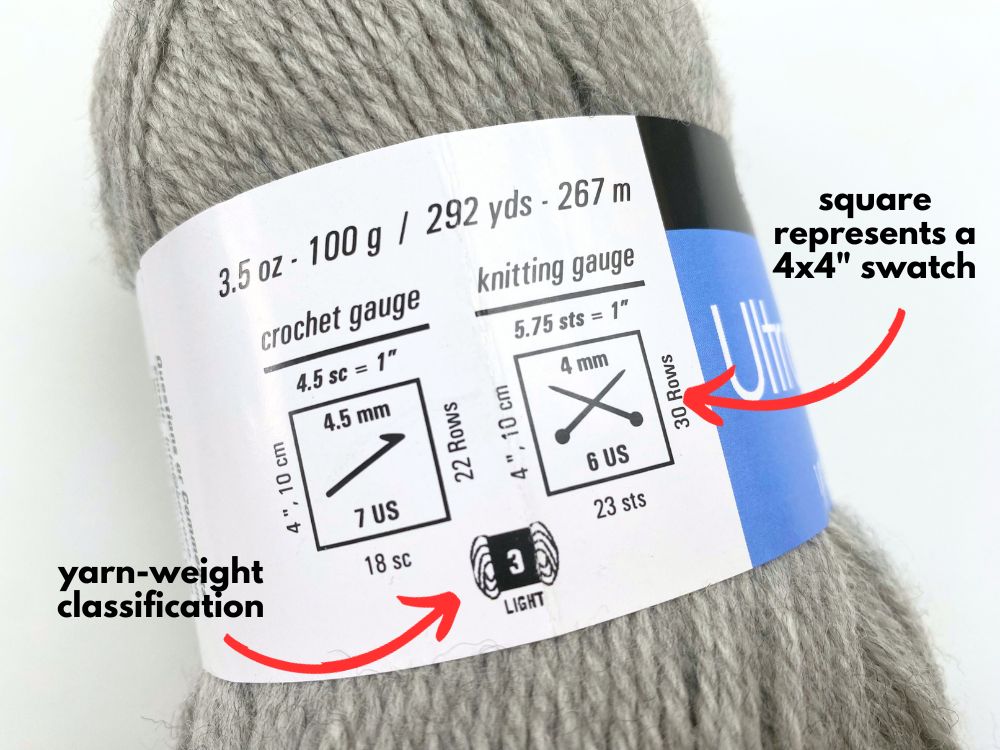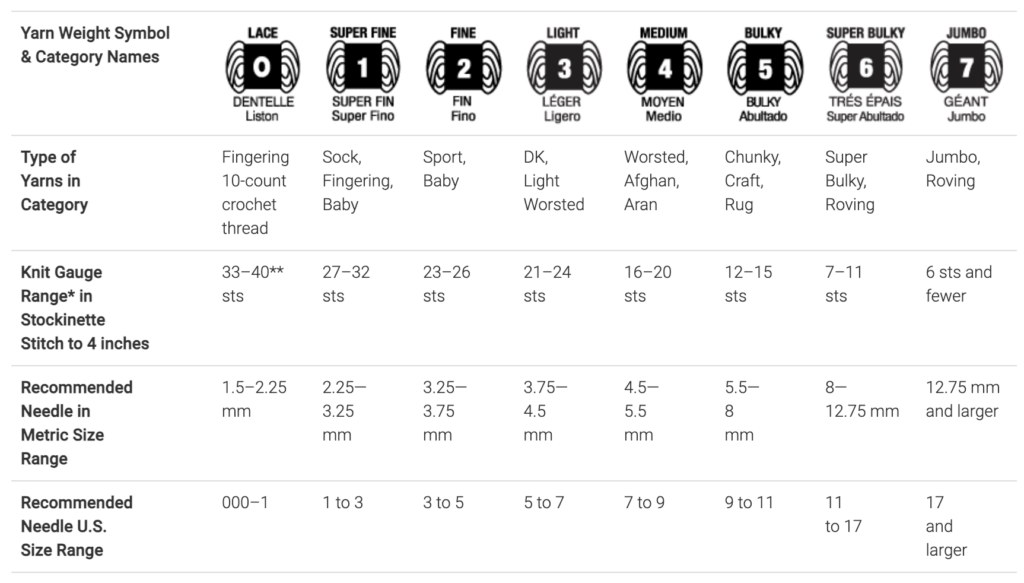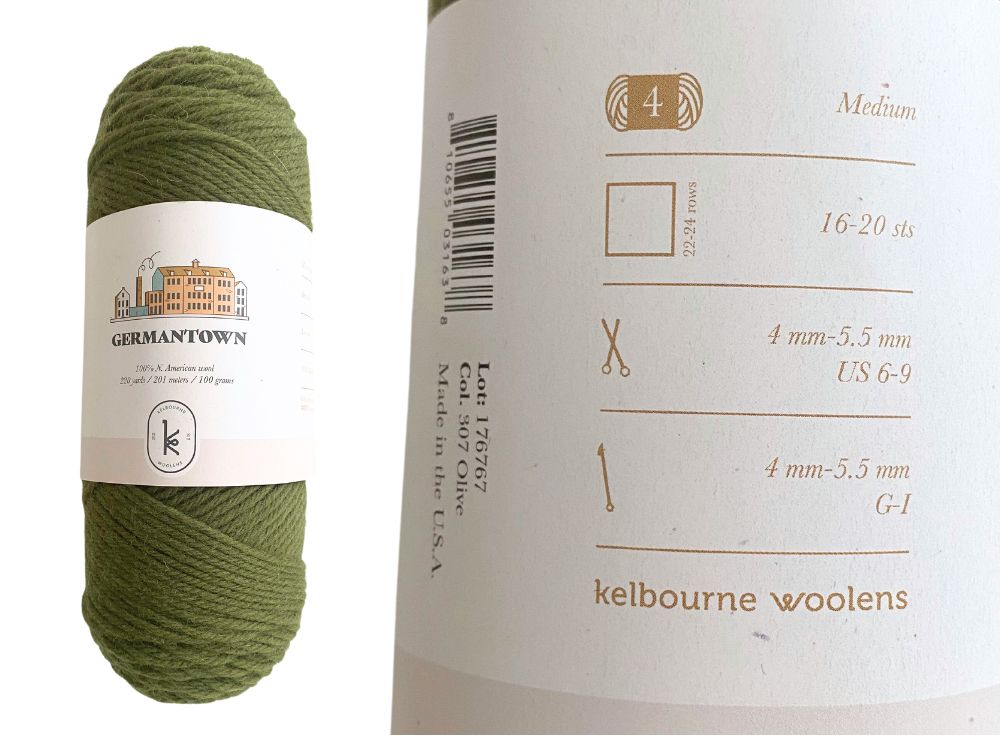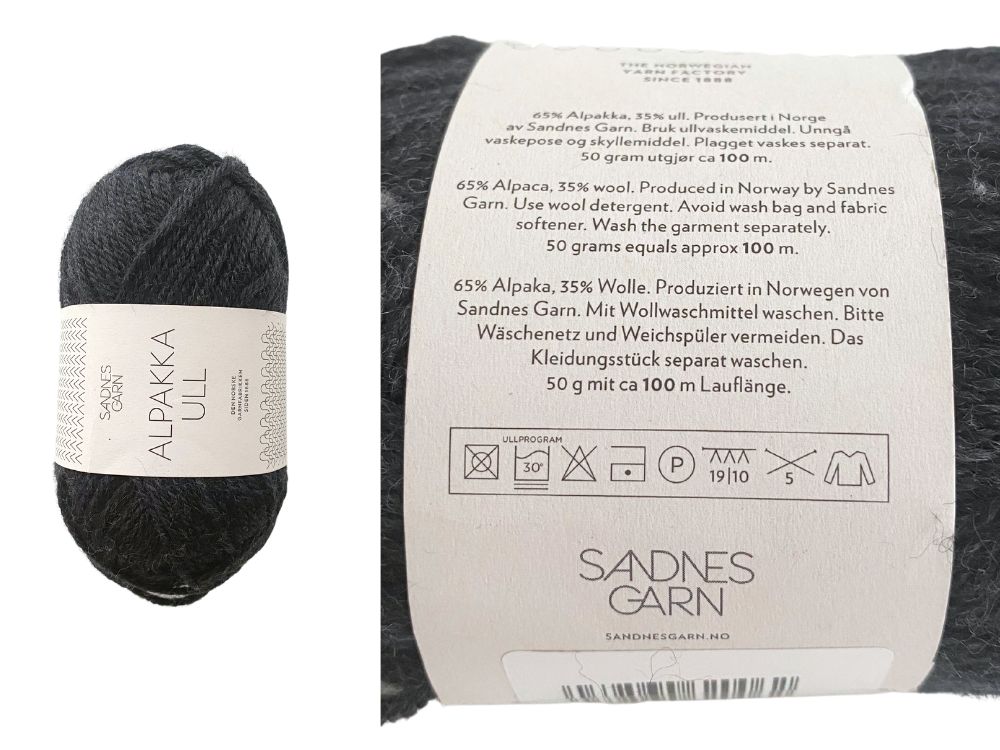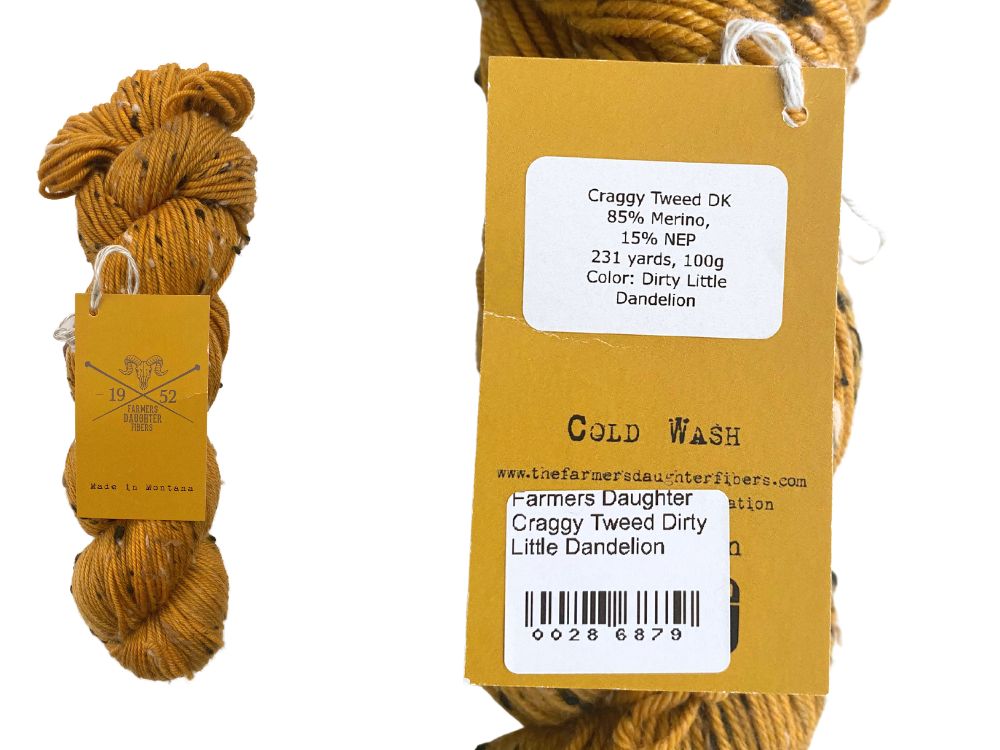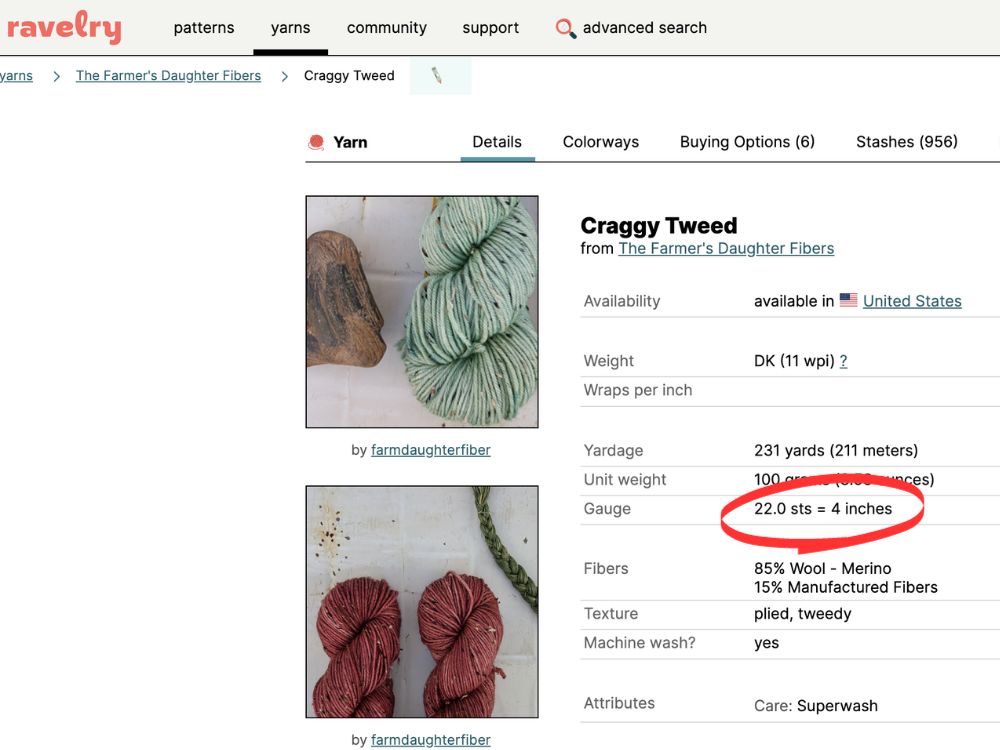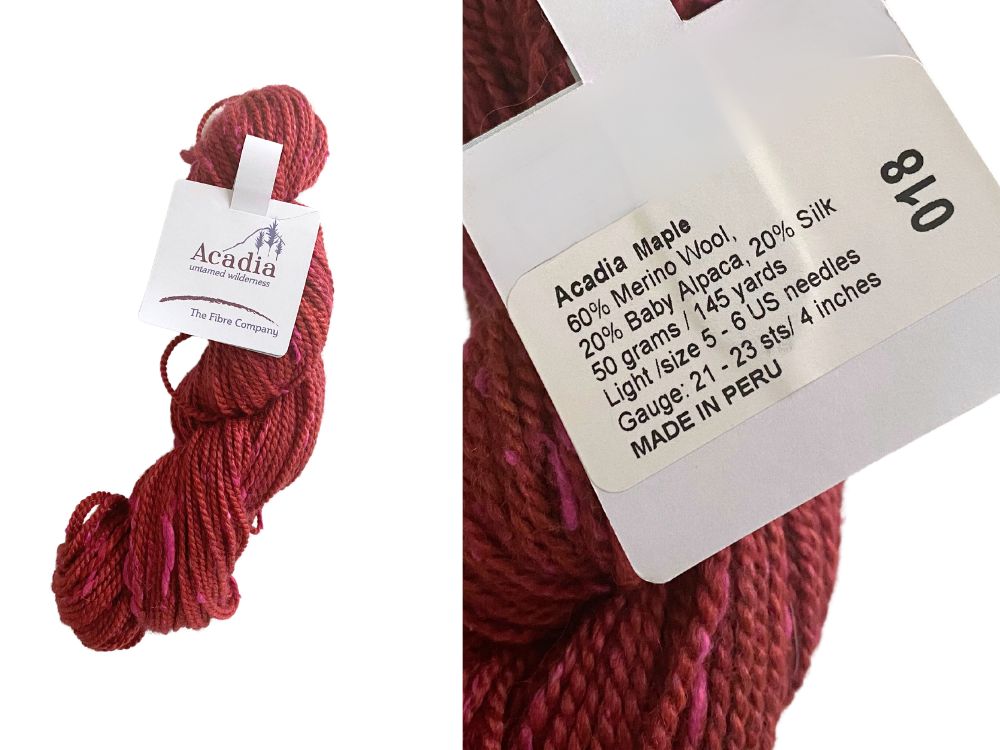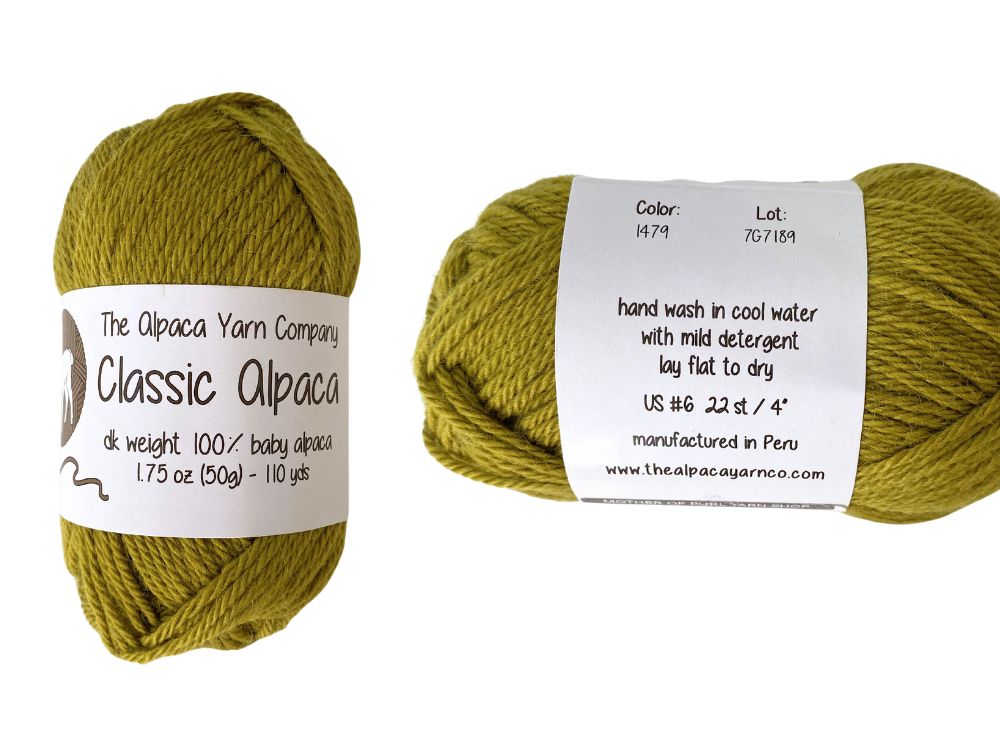There is often lots of great information on a yarn label – things like fiber content, yardage and care instructions. But when yarn shopping or going through your stash at home and trying to find a good match for your next chosen project, one of the most important parts of a yarn label may be the information it provides about the yarn-weight and suggested gauge. This is often the very first thing I look for because it tells me the most about the yarn at first glance.
But how a yarn label communicates this information can be very different brand to brand. And for some yarns, that information isn’t even provided at all. So let’s take a look at some standards that you should be familiar with as well as some real-life labels I can show you how to determine gauge info regardless of the label style.
Example of a “standard” yarn label
Yarns by Berroco tend to have labels that I would consider as “standard”, which just means that they provide yarn-weight classification and gauge in the style and standard established by the Craft Yarn Council. Let’s take a look at one them:
In terms of yarn-weight, this label is using the classification system established by the Craft Yarn Council which labels yarn-weight (i.e, thickness) into 8 different categories, ranging from Lace (0) to Jumbo (7). For reference, I’ve pasted the full classification chart below. So as you can see on this skein of Berroco, this particular yarn is a “Light – 3”, which, according to the chart below, means it’s considered a DK yarn.
Now let’s talk about how to read the gauge information. This information is presented in a square graphic and it has the 4″/10 cm label on the leftside. So it’s meant to represent a 4×4″ square swatch. Along the bottom it says “23 sts” and along the right side it says “30 rows”. Lastly, in the center of the square it shows a knitting needle graphic with the label of “4 mm/US 6”. So this whole graphic translates as follows:
Berroco suggests that this yarn can give you a gauge of 23 sts & 30 rows = 4″/10 cm on a US 6/4mm needle.
As we’ve discussed in other blog posts though, gauge tension can be different person-to-person but by the label providing suggested gauge with a suggested needle size, you at least have a starting point for your swatching process and know that the company thinks this yarn works well at that particular gauge. Also keep in mind that the yarn will likely work well at gauges close to this as well.
5 Examples of some other types of yarn labels…
So do all yarn labels depict yarn-weight and suggested gauge in this same format? Nope! Some incorporate elements of the above and some use their own format, while some provide little or no information about yarn-weight or gauge. Below are some examples of different types of labels you may encounter at some point and how to translate them or find the info you need.
Example 1: Germantown by Kelbourne Woolens
Germantown provides information very similarly to our Berroco example. The only difference is that the square swatch graphic doesn’t communicate that it’s meant to represent 4×4″, so that is just some “assumed knowledge” you need to know. So if you ever see a similar square on a yarn label with no measurement label, then you should assume it’s a 4×4″ square/swatch representation.
The other difference with this label is that unlike Berroco, they are providing a gauge range and this is common on labels. So they are suggesting this yarn will work well at a gauge of anywhere between 16 – 20 sts over 4″ (and again, they don’t provide the 4″ measurement so that’s some more “assumed knowledge” on this label). They also provide a range of needle sizes (US 6-9) that would likely be used to obtain the gauge range.
Example 2: Alpakka Ull by Sandnes Garn
Alpakka Ull’s label is quite different from Berroco or Germantown. First, there is no yarn-weight classification listed, either on the back of the label or in the name of the yarn. So we’ll have to rely on the suggested gauge to figure out what weight this yarn is classified as. But there is no square/swatch graphic – instead, we’ll need to look at the symbols that are listed under the fiber content. The first 5 symbols all relate to the yarn care (you can refer to this page if you need some definitions for such symbols). But the 6th and 7th symbols both relate to gauge.
The 6th symbol shows “19|10″ with a graphic of knitting stitches above it. What this means is that 19 sts = 10 cm (since this is a Norwegian brand they are providing just centimeters, but 10 cm = 4”). And then the 7th symbol shows knitting needles with the number “5”. That is meant to represent that they suggest the gauge of 19 sts = 10 cm on a 5mm needle (otherwise known as a US 8).
So although no yarn-weight classification is provided, we can look at the Craft Yarn Council’s table above again and see that a gauge of 19 sts = 4″ would mean the yarn is classified as a “Medium-4”, a.k.a worsted.
Example 3: Craggy Tweed by The Farmers Daughter
Craggy Tweed by The Farmer’s Daughter is a great example of a yarn label you’ll often find on an indie dyer or hand-dyed yarn. Often the only information you’ll find is the yarn-weight and it’s often just classified by name (not number). So in this example, you can see that they have added “DK” at the top of the label. But other than this, all of the other info about the label pertains to fiber content, yardage and care. So when you encounter a label like this and want to know what gauge they may suggest, you have a few options:
- Since you know the yarn is considered a “DK”, you can then refer to the gauge range of typical DK yarns in that Craft Yarn Council table above (along with the suggested typical needle sizes they provide).
- Look on Ravelry.com – all yarns typically have yarn info pages on this site and often a suggested gauge is provided there even if there isn’t anything on the label. See below for this example:
3. You can also look online at yarn shops that sell the yarn – they will often provide additional gauge information on their yarn pages. In this case, I had purchased this yarn at Wool & Co, and so I can go to their page about this yarn on their website to get more details.
Example 4: Acadia by The Fibre Company
Acadia by The Fibre Company is another good example of a label that provides all the info you need, but in a different style than some of the other labels we’ve discussed. In terms of yarn-weight classification, it doesn’t provide a number of name (like sport or DK), but it does say “Light” (on the line above the gauge). If we look at the Craft Yarn Council’s chart again, “light” is what they use to describe yarn-weight #3, i.e, DK. So we can safely assume that they classify this yarn as a DK-weight. The other clue is that they list the gauge range as 21-23 sts/4″. Again if we look at the chart, that range of 21-23 also falls under “light/3/DK” classification. So again, we can definitely deduce then from all these tidbits of info that this yarn is considered a DK and that they suggest it works well at a gauge of 21-23 sts = 4″.
Example 5: Classic Alpaca by The Alpaca Yarn Company
Our last example is Classic Alpaca by The Alpaca Yarn Company. Right away on the front of the label we see that it says “dk weight 100% baby alpaca”. So right away we know it’s a DK. Then on the back of the label, under the care instructions, it provides a gauge of 22 sts = 4″ on a US 6 needle. So again this confirms that it’s considered a DK and they suggest a gauge of 22 sts = 4″ on a US 6 (although a gauge a little above or below this will also work, even if they haven’t provided a range).
I hope walking you through these yarn label examples helps to show you how to read a yarn label for gauge information as well as what to do if it’s lacking the information you need. One last important note though: remember that just because a yarn may suggest a particular gauge range doesn’t mean that it won’t work for other gauges as well. A yarn can do just about anything you want it to do – the question will always just be whether you like the fabric it creates at a different gauge. If you would like to learn more about this concept, you can check out my blog post here.

